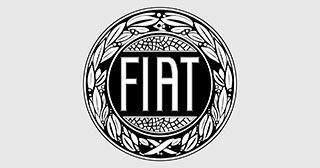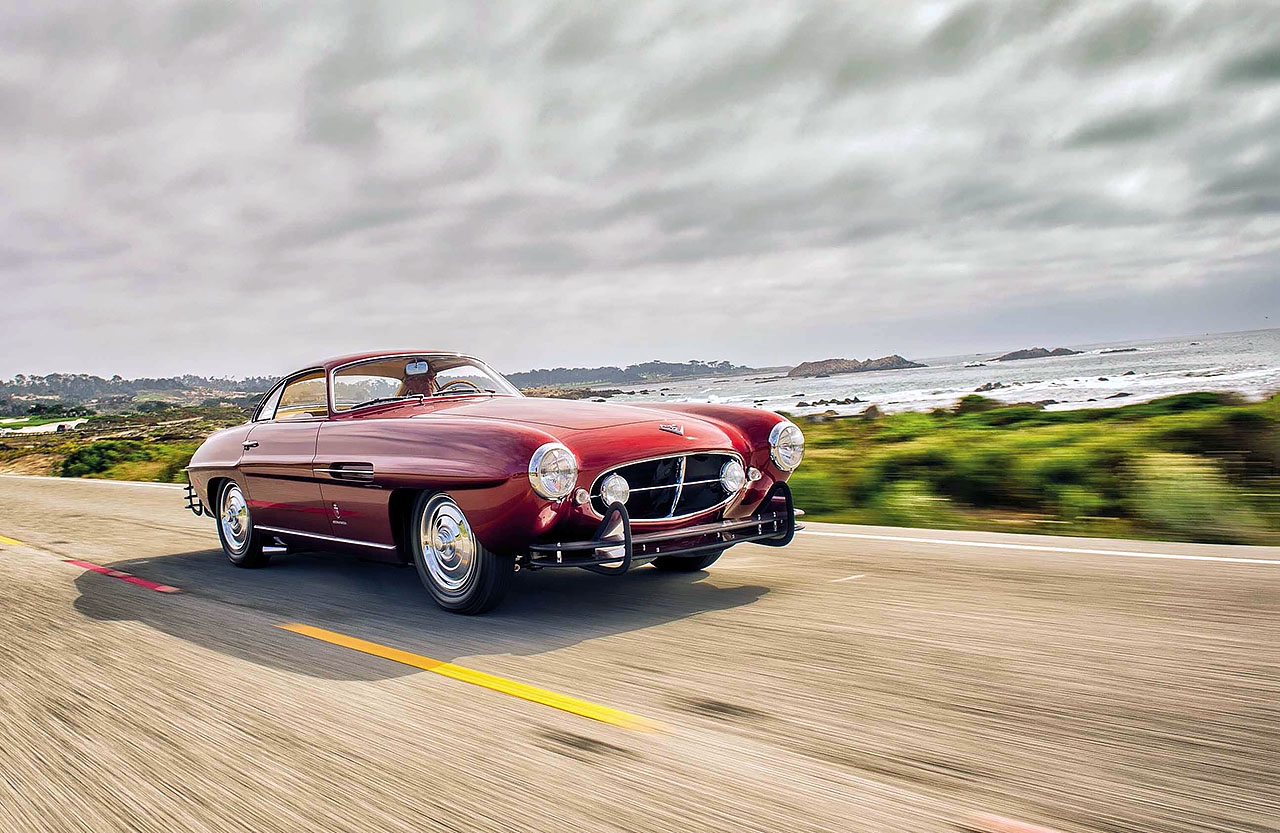
Fiat 8V Supersonic Incredible life story of Lou Fageol’s Italian rarity Life at the speed of sound. The story of this Fiat 8V Supersonic is almost as remarkable as that of the man who owned it. Words David Burgess-Wise. Photography Dirk de Jager.
It was inevitable that Lou Fageol should have gasoline in his blood. His father Frank was one of the four Fageol brothers from Des Moines, Iowa, who had been involved with automobiles since 1898, and in 1917 Frank Fageol partnered his friend and former employer Louis H Bill in the launch of the Fageol automobile, hailed as ‘the World’s Most Expensive Car powered by the World’s Largest Engine’. Built in Oakland, California, this grandiose monster packed a 13,514cc Hall-Scott six-cylinder aero-engine and was reputedly capable of 116mph.
Between them the Fageols held more than 125 patents, ran various car dealerships and founded a company that would not only become one of the largest truck and tractor manufacturers in the USA, but also the country’s second-largest maker of buses.

Lou Fageol took over the reins post-war (the factory had been producing many of the fuselage parts for America’s first jet fighter, the Lockheed P80 Shooting Star) and was an astute businessman who enjoyed the playboy lifestyle that the company’s millions afforded him. He would associate with pioneering manufacturers of speed equipment such as Louis Meyer of Offenhauser racing engines and camshaft and carburettor manufacturer Ed Winfield.
He proved his worth as a racing driver and, away from the track, became a powerboat racer. On Seattle’s Lake Washington on 5 August 1955, his boat Slo-Mo-Shun V turned a complete backwards somersault at 165mph during a qualification trial for the Gold Cup race. Lou Fageol sustained fractured vertebrae, broken ribs, a punctured lung, and permanent damage to his heart. His racing career was over. His untimely death in 1961 (he was 54) was a direct result of the injuries he had received in that horrific crash.
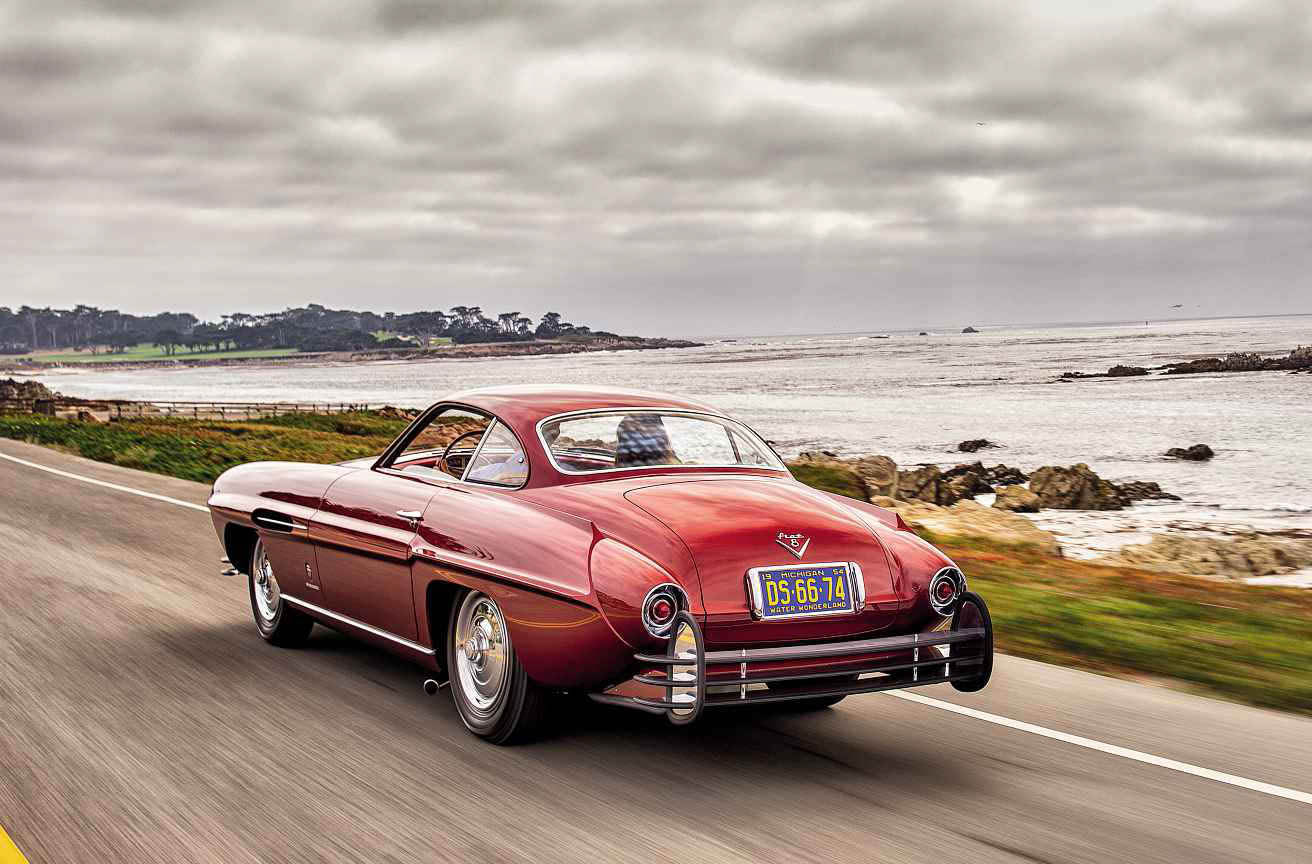
He had won 74 first-place trophies in the sport. During his short yet eventful life, Lou Fageol had befriended Kaufman T Keller, president of Chrysler (1935 to 1950) and then chairman of the board (1950-1956). It was through that friendship that in 1954 Fageol acquired his Fiat 8V Ghia Supersonic, body no 807.
You might think it odd that Fageol should buy a Fiat through Chrysler – this was, of course, 64 years before the Fiat-Chrysler merger of August 2014 – yet the link was through the small but prestigious coachbuilder, Ghia of Turin. The postwar revival of the American car industry had brought Ghia international fame, when Chrysler forged links with it to inject a much-needed dose of style into its own products. Meanwhile, wardamaged Fiat had turned to Detroit, asking Chrysler to help train its technicians in the latest machining and assembly techniques. Mario Boano recruited the commercial director of the SIATA accessory and sports car maker, 30-yearold Luigi Segre, to handle the new contact.
Segre had been a liaison officer with an American Army group working with the Italian resistance during the war, and was ideal for the job. He believed that Ghia’s future lay with a wider clientele than Europe could offer and so travelled to America, where he befriended Chrysler’s vicepresident for export sales, CB Thomas. Chrysler shipped a Plymouth chassis to Turin, where Segre and Boano designed a four-door, six-light saloon body to demonstrate Ghia’s capabilities.
Its craftsmanship and modest cost (around $10,000) convinced Chrysler to commission a series of ten concept cars from Segre, who by the end of 1953 had gained control of Ghia. While these concept cars were mostly designed by an advanced styling group headed by Virgil M Exner, in 1954 Ghia’s chief designer Giovanni Savonuzzi (formerly with Cisitalia) created the remarkable Adventurer II coupé on a DeSoto chassis.
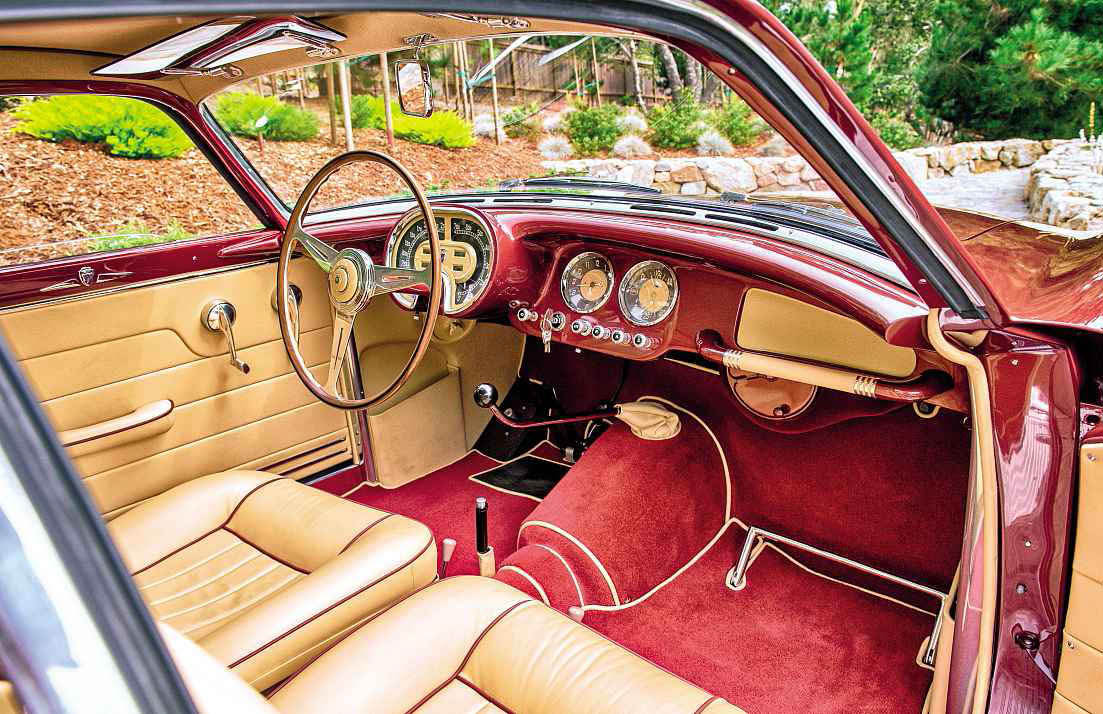
The long, low-slung Adventurer II was the biggest of a series of Supersonica streamlined coupés designed by Savonuzzi, which drew their inspiration from contemporary jet aircraft, with front and rear lights recessed in housings that resembled jet engine intakes. First of the line was a tubular-framed special built by Virgilio Conrero, which had an Alfa Romeo 1900C engine, Fiat 1400 front axle and Lancia Aurelia transaxle. It was driven in the 1953 Mille Miglia by Swiss duo Robert Fehlmann and G Vuille but crashed before the halfway point. It was rebuilt as a roadster.
However, in its brief existence, the Conrero Supersonica had attracted so much attention with its bold styling that it was decided to put the design into production as a limited series, and the new Fiat 8V (Otto Vu in Italian) was selected as the chassis of choice. The Otto Vu was powered by an overhead-valve V8 originally designed by Fiat technical director Dante Giacosa for a six-seater luxury saloon that was aborted when high taxation forced the contraction of the Italian market; its chassis – Fiat’s first with fully independent suspension – was built under contract by Siata.
Only 114 Otto Vus were produced. Shown at the 1953 Paris Salon, the Ghia Supersonic was one of the star exhibits. The prototype 8V Supersonic was subsequently acquired by intuitive engineer Paul Farago, proprietor of a Detroit speed shop, who – as a fluent Italian speaker – acted as interpreter for Chrysler stylist Virgil Exner in his dealings with Segre and Boano. Over the next three years, Ghia built 14 more 8V Fiat Supersonics; there were similar versions of the Aston Martin DB2/4 and Jaguar XK too.

Clockwise from above. Jet-age lines earned Ghia the Supersonic sobriquet; as exotic inside as out; curious multi-blade bumpers replicate those fitted by Lou Fageol, with which the 8V won at Pebble Beach in ’55; 2.0-litre V8 was originally intended for a stillborn luxury saloon.
Ghia’s sales records are long lost, probably destroyed during the turbulent late ’60s and early ’70s when Alejandro de Tomaso took over, but the January 1956 issue of Motor Life states that Fageol’s Fiat Supersonic was one of four acquired by Chrysler, presumably for study purposes.
In his ceaseless quest for enhanced performance, Lou Fageol fitted his Supersonic with twin Pepco superchargers (Pepco being the Progressive Engine Products Company, one of Fageol’s own concerns) mounted back-to-back, plus quadruple Zenith carburettors, boosting power output by ‘a good 30hp’ and raising estimated top speed to 140mph.
He also added unsympathetic multi-blade bumpers front and rear. In this form the Ghia Supersonic was shown at Watkins Glen in 1954 and won its class at Pebble Beach in 1955.
Around 1958, according to Fred Puhn of National City, San Diego (who at the time worked for Lou Fageol at The Speed Shop in La Mesa, California), the Fiat engine and transmission – probably because the twin-blower installation had overtaxed them – were replaced by a small-block Chevy ‘Fuelie’ V8 built to Sebring race tune specification by three-times Indianapolis 500 winner Mauri Rose, who had retired to California after an accident in the 1951 Indy 500. Nothing more was heard of the Supersonic’s original power unit, which was probably scrapped.
Never content to do things by halves, Lou Fageol acquired a second 8V Supersonic for his wife Caryl, again through KT Keller; he modified the rear ends of both cars by adding large rivetedon tailfins and Continental spare wheel kits (after his death, Lou’s son Ray had them removed by the Vesco body shop in La Mesa). Ray Fageol kept both cars for a few years, then advertised them for sale in the latter part of the 1960s. They were inspected by Fiat 8V expert Erik Nielsen, who reported that they were both in rough condition.
The featured car, chassis no 000040, was acquired by Paul Ross Jr of Kent, Ohio, whose family home on Prospect St was fairly close to the Fageol Twin Coach factory. His father Paul Sr was a friend of Lou Fageol’s, and often towed Lou’s hydroplanes to races. Recalls Paul Jr’s son Bill: ‘One of the Slo-Mo-Shun raceboats was parked and stored behind my grandfather’s home for quite some time. My father told me that he went along during a tuning trip with my grandfather, Lou and others to run one of the Slo-Mo-Shuns on Lake Milton in north-east Ohio.’
He adds: ‘Lou’s wife’s car, chassis 000049, ended up with Jerry Farber of Detroit, Michigan.’ Paul Ross Jr and his wife separated in the 1960s, and Ross moved to San Diego, California, taking the Supersonic with him. His son Bill grew up with his mother in the Kent-Ravenna area of Ohio until moving in with his father in 1974. He recalls: ‘At that time the Supersonic was parked in our driveway. The body was a flat yellow colour in poor condition and the interior was fairly rotted. There was no engine in the car; it needed a full restoration. My father didn’t do much with it until the late 1970s, when he installed a small-block Chevy V8 with Rochester fuel injection in it.
‘The car was soon painted red and a new beige interior installed. My dad drove the car sparingly for just a few years and by about 1985 it was parked. I remember meeting Ray Fageol when he came to visit us in Lakeside, California, in 1976 when I was a senior in high school. He took me for a fast ride in his Toyota Celica, which had a Pepco blower installed. He was a friendly, likeable fellow.’
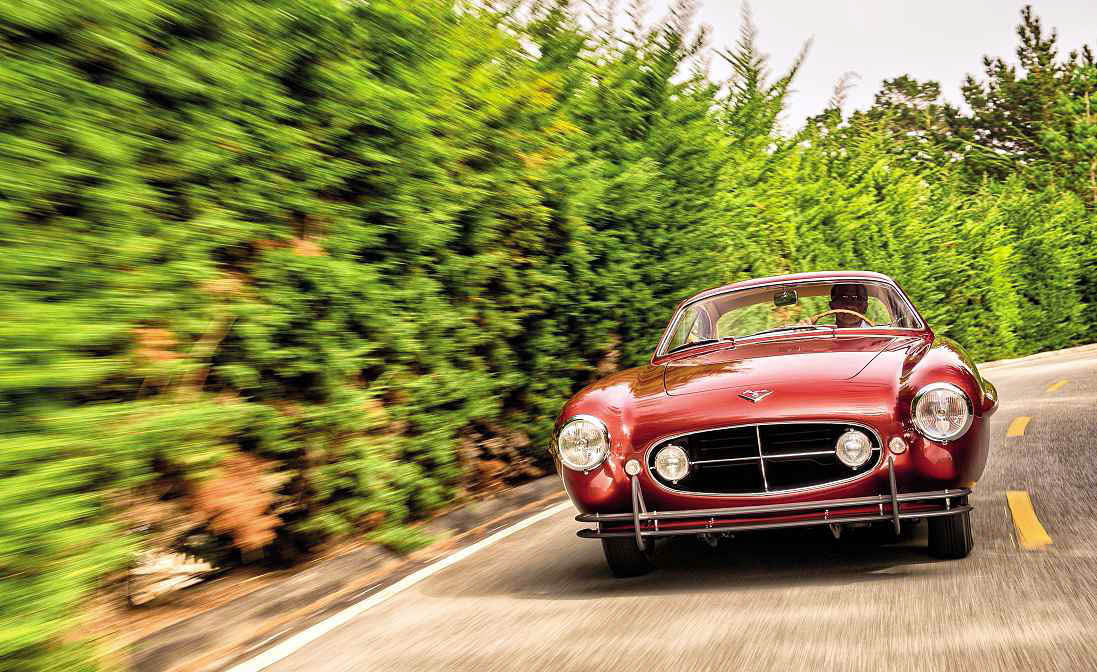
Around 2001, Paul Ross Jr transferred ownership of the Fiat Supersonic to Bill; it was in poor condition. Says Bill: ‘While it was in my care, I removed and replaced the engine and transmission, rebuilt the brakes and prepared the body for new paint. I did not finish the restoration, but sold the car to Marc Behaegel.’
Says Belgian Fiat 8V enthusiast Behaegel, who bought the car in February 2013: ‘I discovered the car in November 2012 in a little town between Los Angeles and San Diego. I was smitten by its lines – so futuristic for a car from that age. My other cars are an 8V Zagato and an 8V Siata 208 so it was obvious my next car should be an 8V!
‘And, of course, the car had a certain history, which was also attractive – I never buy a car without a history. It had been owned by a special guy who was not only a racer but had owned special cars. The car had won its class at Pebble Beach in 1955, so for me there was a challenge – to take the car back to Pebble Beach in 2015.’ And so work began. ‘I decided to give the car the full attention it deserved, with a meticulous restoration to originality,’ says Behaegel. ‘I even took the risk of adding the Lou Fageol bumpers – a perfectly reversible feature – in my attempt to show the car as it was presented at the Pebble Beach concours in 1955, 60 years before.
‘The car had never been shown since 1955 and had gone off the radar, as it had been in private hands since then, just sitting in a garage awaiting restoration. When Bill Ross retired, he started the project, but gave up on it, as it proved too difficult.
The Supersonic was shipped to me a few months after I acquired it, which left me just over two years. The car had not been properly restored since the 1970s; it was in a pretty rough state and needed bringing back to its original condition. ‘The first thing we did was to take the car apart, make an inventory of all the components that were available, note all the parts that were missing and try to source them. When we had gathered all the important elements and located a correct 8V engine [00017], it was time to give it a go!’
Restoration was entrusted to Strada e Corsa in Haarlem, Holland, a company run by brothers Jurriaan and Lennart Schouwenburg and which specialises in the restoration and sales of sports/ racing and Gran Turismo cars, especially those built by Italian marques.
Says Lennart Schouwenburg: ‘It was quite a hard project, as this car had a very powerful Chevy engine, gearbox and rear axle in it, and all kinds of modifications had been made. To restore it to the original specification, we had to make all sorts of special fitments and brackets to install the correct gearbox and rear axle. These were missing, so we had to manufacture the gearbox and rear axle here from scratch.
‘We had to cast, machine and make gears, sprockets, pinions and shafts – every single piece of the rear axle and gearbox. Luckily we had sample material from other 8Vs in our workshop, so we could carry out 3D scanning of the gearbox and rear axle parts.
‘We made wooden patterns to cast the rear axle and gearbox casings, for which we used a modern aluminium alloy that is eight times stronger than the aluminium used in 1953. We did metallurgic research on the cylinder block and the lab found that it was identical to that used to make kitchen utensils such as saucepans in the early 1950s. It was of very poor quality.
‘We managed the whole project from start to finish. The car came in from America, we disassembled it and sent the chassis and body to a firm near Venice, who did the bodywork and paint. I flew there five times in a year to look at the work, as did the owner. We did all the mechanical work here at Strada e Corsa, such as pedalbox, brakes, engine, clutch, carburettors, rear axle, steering housing…’
Restoration over, Marc Behaegel was able to drive his Supersonic for the first time and compare it with his other 8Vs. ‘My Zagato – which also has an aluminium body – and Siata drive like sports cars, whereas the Supersonic is very quiet and drives like a modern GT car. It’s not a car for racing – it’s a car for the boulevards.’
He adds: ‘As a first-time entrant in the Pebble Beach Concours, I told myself not to have any expectations. The car attracted great attention from the public and the connoisseurs but I was fully aware that only the professional jury was responsible for studying and judging my car. ‘Great was my surprise when I was told to line up for the podium. More stress was added when I was not called in for third place. I could not believe my ears when the second car was also summoned to the podium.
‘At that moment a mixture of stress, surprise and happiness took over and overwhelmed me. And when I drove my car onto the podium to be awarded First in Class, it really was an unforgettable moment!’
Unforgettable certainly, yet only fitting for a car with such a remarkable story to tell.
‘In this form the Ghia Supersonic was shown at Watkins Glen in 1954 and won its class at Pebble Beach in 1955’
1953 Fiat 8V Ghia Supersonic
Engine 1996cc V8, OHV, two Weber 36 DCF3 carburettors
Power 105bhp @ 6000rpm
Torque 108lb ft @ 3600rpm
Transmission Four-speed manual, rear-wheel drive
Steering Worm and roller
Suspension Front and rear: wishbones, coil springs, hydraulic dampers
Brakes Drums
Weight 997kg
Performance Top speed 112mph. 0-60mph 11sec
‘Lou Fageol proved his worth as a racing driver and, away from the track, became a powerboat racer’

Clockwise from left. The 8V Ghia Supersonic in its restored state; first owner Lou Fageol; one of the passenger buses his company built; Slo-Mo-Shun V, the superboat that earned him victory – and would ultimately cost him his life.

